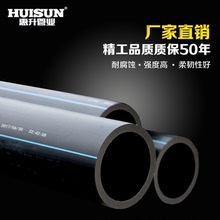UPDATE: Sept. 8, 2016, 7:14 p.m. EDT NASA's OSIRIS-REx successfully launched to space at 7:05 p.m. ET from Florida on its journey to take a sample of an asteroid and bring it back to Earth.
NASA wants to snag a piece of an asteroid, and a new mission launching Thursday is designed to do just that.
The space agency's uncrewed OSIRIS-REx spacecraft will speed toward a meet up with the giant asteroid Bennu after its launch, expected at 7:05 p.m. ET Thursday from Cape Canaveral, Florida.
It will take seven years for the spacecraft to reach the asteroid.

 SEE ALSO:NASA sends spacecraft to asteroid for answers about birth of our solar system
SEE ALSO:NASA sends spacecraft to asteroid for answers about birth of our solar systemThe mission, a first of its kind for NASA but the third such mission launched worldwide in the last 15 years, should deliver a sample of the asteroid back to Earth by 2023, potentially revealing more about the origins of our planet -- and even life -- than ever before.
"The formation of the solar system was a violent but dimly recorded time," Jason Dworkin, OSIRIS-REx project scientist, said during a news conference Tuesday.
"Although most of the record of the ancient Earth is lost to the dynamic geology that shaped our planet, there are lines of evidence that indicate that heavy bombardment by debris from the formation of the solar system around the same time helped form the oceans, and around a few million years later, life," he said.
Asteroids may have slammed into Earth during the early epoch. Some of these may have been carrying carbon-rich material that could be the precursors to life as we know it.
Cosmic questions to answer
The OSIRIS-REx team chose Bennu -- a 1,614-foot-long space rock a little taller than the Eiffel Tower -- as their target for a variety of reasons.
First of all, the space rock is relatively easy to reach from Earth, circling the sun in an orbit similar to our planet's. That orbit will allow OSIRIS-REx to meet up with Bennu and then come home after collecting its sample, according to Christina Richey, a scientist working with the mission.
Bennu is also a relatively large asteroid, which means that its rotation speed is likely slower than that of smaller objects, allowing OSIRIS-REx to match its spin and get into the asteroid's orbit more easily.
"Its rotation speed is only 3.4 hours, so we'll be able to match the rotation speed of it and do a safe, smooth, slow high-five to collect that sample that we will then return to Earth," Richey said during the news conference.
"We'll be able to match the rotation speed of it and do a safe, smooth, slow high-five to collect that sample"
The asteroid was also chosen because of its composition, Richey said.
Scientists think that the asteroid is "rich in carbon," and may harbor materials that are 4.5-billion-years-old, leftovers from the very beginning of the solar system.
Asteroids like Bennu may contain organic materials like amino acids and carbon-based molecules that could be the "precursors to life on Earth or elsewhere within our solar system," Richey said.
Scientists have an idea of what might be within asteroids like Bennu because they've been able to examine the composition of meteorites that may have broken off and fallen to the Earth's surface.
However, those space rocks that have descended to Earth are likely contaminated by our planet. That contamination means the rocks are of limited use to scientists as they try to piece together the history of our solar system.
Bennu or bust
But before scientists get their hands on the space rock sample -- seven years after launch -- OSIRIS-REx will need to run the cosmic gauntlet.
The spacecraft will arrive at the asteroid in August 2018 and then spend some time mapping Bennu in 3D before the main event in July 2020, NASA said.
Via GiphyAt that time, OSIRIS-REx will touch down on the surface of the asteroid and grab at least 60 grams, or up to 2 kilograms, of rock and dust for its return mission to Earth.
"We are basically a space vacuum cleaner," OSIRIS-REx principal investigator Dante Lauretta said during a NASA presentation on Wednesday.
Once its sample is in hand, the spacecraft will leave Bennu behind in 2021, speeding through space for about 2.5 years before getting back to Earth in September 2023.
OSIRIS-REx will then spit out the capsule containing its asteroid sample, putting it on course to enter Earth's atmosphere, hopefully allowing it to land in the Utah desert.
Not the first mission to an asteroid
Tweet may have been deleted
OSIRIS-REx will not be the first spacecraft launched from Earth to visit an asteroid to sample it.
Japan's Hayabusa probe launched in 2003, visiting Asteroid Itokawa in 2005.
"There, it made several attempts at collecting samples in touch and go maneuvers," NASA wrote in a description of the mission on the space agency's website.
"During one of these attempts the spacecraft unexpectedly lost communication with Earth and crash-landed on the asteroid surface, damaging the spacecraft."
Even though the spacecraft was damaged, it still managed to return to Earth in 2010 and contained an unexpected sampling of the space rock.
"This is the biggest unknown and the biggest danger for OSIRIS-REx"
Japan also launched its Hayabusa 2 mission in 2014.
That spacecraft should rendezvous with its asteroid target -- Asteroid Ryugu -- in 2018, delivering its bounty of space rock material back to Earth by 2020, if all goes according to plan.
The fact that OSIRIS-REx and Hayabusa 2 will be at their respective asteroids at the same time will be a huge advantage to scientists and mission controllers working with the whole spacecraft from Earth.
"The plan is for Hayabusa 2 to get the first sample in, I think, October 2018," Lauretta said in an interview with the Japan Aerospace Exploration Agency.
"That’s about one year before we go for our sample, so I want to know what happens to Hayabusa 2 when they touch the asteroid. This is the biggest unknown and the biggest danger for OSIRIS-REx, so we really want to understand what the surface is like when you touch it."
NASA scientists are also planning to work with their Japanese counterparts to share results as the two probes explore their targets.
"We will have some Japanese scientists in Tucson, Arizona, and we’ll have some of our scientists here in Japan helping each other explore. It is important to exchange information while we are operating our spacecraft," Lauretta said.
Once both spacecraft return their precious cargo to Earth, scientists will get the chance to examine two asteroids in detail at about the same time.
This will afford them an unprecedented opportunity to learn even more about how two of the ancient objects in our solar system formed, possibly unlocking the key to the evolution of our home planet.
You can watch the launch live via NASA.








